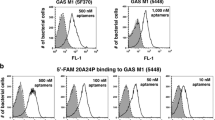Abstract
Over a century ago, Karl Landsteiner discovered that blood group antigens could predict the immunological outcome of red blood cell transfusion. While the discovery of ABO(H) blood group antigens revolutionized transfusion medicine, many questions remain regarding the development and regulation of naturally occurring anti-blood group antibody formation. Early studies suggested that blood group antibodies develop following stimulation by bacteria that express blood group antigens. While this may explain the development of anti-blood group antibodies in blood group negative individuals, how blood group positive individuals, who cannot generate anti-blood group antibodies, protect themselves against blood group positive microbes remained unknown. Recent studies suggest that several members of the galectin family specifically target blood group positive microbes, thereby providing innate immune protection against blood group antigen positive microbes regardless of the blood group status of an individual. Importantly, subsequent studies suggest that this unique form of immunity may not be limited to blood group expressing microbes, but may reflect a more generalized form of innate immunity against molecular mimicry. As this form of antimicrobial activity represents a unique and unprecedented form of immunity, we will examine important considerations and methodological approaches that can be used when seeking to ascertain the potential antimicrobial activity of various members of the galectin family.
Access this chapter
Tax calculation will be finalised at checkout
Purchases are for personal use only
Similar content being viewed by others
References
Springer GF, Williamson P, Brandes WC (1961) Blood group activity of gram-negative bacteria. J Exp Med 113(6):1077–1093
Springer GF, Horton RE (1969) Blood group isoantibody stimulation in man by feeding blood group-active bacteria. J Clin Invest 48(7):1280–1291. doi:10.1172/JCI106094
Yi W, Shao J, Zhu L, Li M, Singh M, Lu Y, Lin S, Li H, Ryu K, Shen J, Guo H, Yao Q, Bush CA, Wang PG (2005) Escherichia coli O86 O-antigen biosynthetic gene cluster and stepwise enzymatic synthesis of human blood group B antigen tetrasaccharide. J Am Chem Soc 127(7):2040–2041. doi:10.1021/ja045021y
Garratty G (2000) Blood groups and disease: a historical perspective. Transfus Med Rev 14(4):291–301. doi:10.1053/tmrv.2000.16228
Yamamoto F, Clausen H, White T, Marken J, Hakomori S (1990) Molecular genetic basis of the histo-blood group ABO system. Nature 345(6272):229–233. doi:10.1038/345229a0
Figdor CG, van Kooyk Y, Adema GJ (2002) C-type lectin receptors on dendritic cells and Langerhans cells. Nat Rev Immunol 2(2):77–84. doi:10.1038/nri723
van Kooyk Y, Rabinovich GA (2008) Protein-glycan interactions in the control of innate and adaptive immune responses. Nat Immunol 9(6):593–601. doi:10.1038/ni.f.203
Stowell SR, Arthur CM, Mehta P, Slanina KA, Blixt O, Leffler H, Smith DF, Cummings RD (2008) Galectin-1, -2, and -3 exhibit differential recognition of sialylated glycans and blood group antigens. J Biol Chem 283(15):10109–10123. doi:10.1074/jbc.M709545200
Stowell SR, Arthur CM, Slanina KA, Horton JR, Smith DF, Cummings RD (2008) Dimeric galectin-8 induces phosphatidylserine exposure in leukocytes through polylactosamine recognition by the C-terminal domain. J Biol Chem 283(29):20547–20559
Karmakar S, Stowell SR, Cummings RD, McEver RP (2008) Galectin-1 signaling in leukocytes requires expression of complex-type N-glycans. Glycobiology 18(10):770–778
Stowell SR, Cho M, Feasley CL, Arthur CM, Song X, Colucci JK, Karmakar S, Mehta P, Dias-Baruffi M, McEver RP, Cummings RD (2009) Ligand reduces galectin-1 sensitivity to oxidative inactivation by enhancing dimer formation. J Biol Chem 284(8):4989–4999
Poland PA, Rondanino C, Kinlough CL, Heimburg-Molinaro J, Arthur CM, Stowell SR, Smith DF, Hughey RP (2011) Identification and characterization of endogenous galectins expressed in Madin Darby canine kidney cells. J Biol Chem 286(8):6780–6790. doi:10.1074/jbc.M110.179002
Carlsson S, Oberg CT, Carlsson MC, Sundin A, Nilsson UJ, Smith D, Cummings RD, Almkvist J, Karlsson A, Leffler H (2007) Affinity of galectin-8 and its carbohydrate recognition domains for ligands in solution and at the cell surface. Glycobiology 17(6):663–676. doi:10.1093/glycob/cwm026
Stowell SR, Arthur CM, Dias-Baruffi M, Rodrigues LC, Gourdine JP, Heimburg-Molinaro J, Ju T, Molinaro RJ, Rivera-Marrero C, Xia B, Smith DF, Cummings RD (2010) Innate immune lectins kill bacteria expressing blood group antigen. Nat Med 16(3):295–301. doi:10.1038/nm.2103
Cerliani JP, Stowell SR, Mascanfroni ID, Arthur CM, Cummings RD, Rabinovich GA (2011) Expanding the universe of cytokines and pattern recognition receptors: galectins and glycans in innate immunity. J Clin Immunol 31(1):10–21. doi:10.1007/s10875-010-9494-2
Kohatsu L, Hsu DK, Jegalian AG, Liu FT, Baum LG (2006) Galectin-3 induces death of Candida species expressing specific beta-1,2-linked mannans. J Immunol 177(7):4718–4726
Arthur CM, Cummings RD, Stowell SR (2014) Using glycan microarrays to understand immunity. Curr Opin Chem Biol 18C:55–61. doi:10.1016/j.cbpa.2013.12.017
Stowell SR, Arthur CM, McBride R, Berger O, Razi N, Heimburg-Molinaro J, Rodrigues JP, Noll AJ, von Gunten S, Smith DF, Knirel YA, Paulson JC, Cummings RD (2014) Microbial glycan microarrays define key features of host-microbial interactions. Nat Chem Biol 10:470–476
Stowell SR, Winkler AM, Maier CL, Arthur CM, Smith NH, Girard-Pierce KR, Cummings RD, Zimring JC, Hendrickson JE (2012) Initiation and regulation of complement during hemolytic transfusion reactions. Clin Dev Immunol 2012:307093. doi:10.1155/2012/307093
Ganz T (2003) Defensins: antimicrobial peptides of innate immunity. Nat Rev Immunol 3(9):710–720. doi:10.1038/nri1180
Zasloff M (2002) Antimicrobial peptides of multicellular organisms. Nature 415(6870):389–395. doi:10.1038/415389a
Herigstad B, Hamilton M, Heersink J (2001) How to optimize the drop plate method for enumerating bacteria. J Microbiol Methods 44(2):121–129
Acknowledgments
This work was supported in part by grants from the National Blood Foundation, American Society of Hematology and Hemophilia of Georgia to S.R.S.
Author information
Authors and Affiliations
Corresponding author
Editor information
Editors and Affiliations
Rights and permissions
Copyright information
© 2015 Springer Science+Business Media New York
About this protocol
Cite this protocol
Arthur, C.M., Cummings, R.D., Stowell, S.R. (2015). Evaluation of the Bactericidal Activity of Galectins. In: Stowell, S., Cummings, R. (eds) Galectins. Methods in Molecular Biology, vol 1207. Humana Press, New York, NY. https://doi.org/10.1007/978-1-4939-1396-1_27
Download citation
DOI: https://doi.org/10.1007/978-1-4939-1396-1_27
Published:
Publisher Name: Humana Press, New York, NY
Print ISBN: 978-1-4939-1395-4
Online ISBN: 978-1-4939-1396-1
eBook Packages: Springer Protocols




